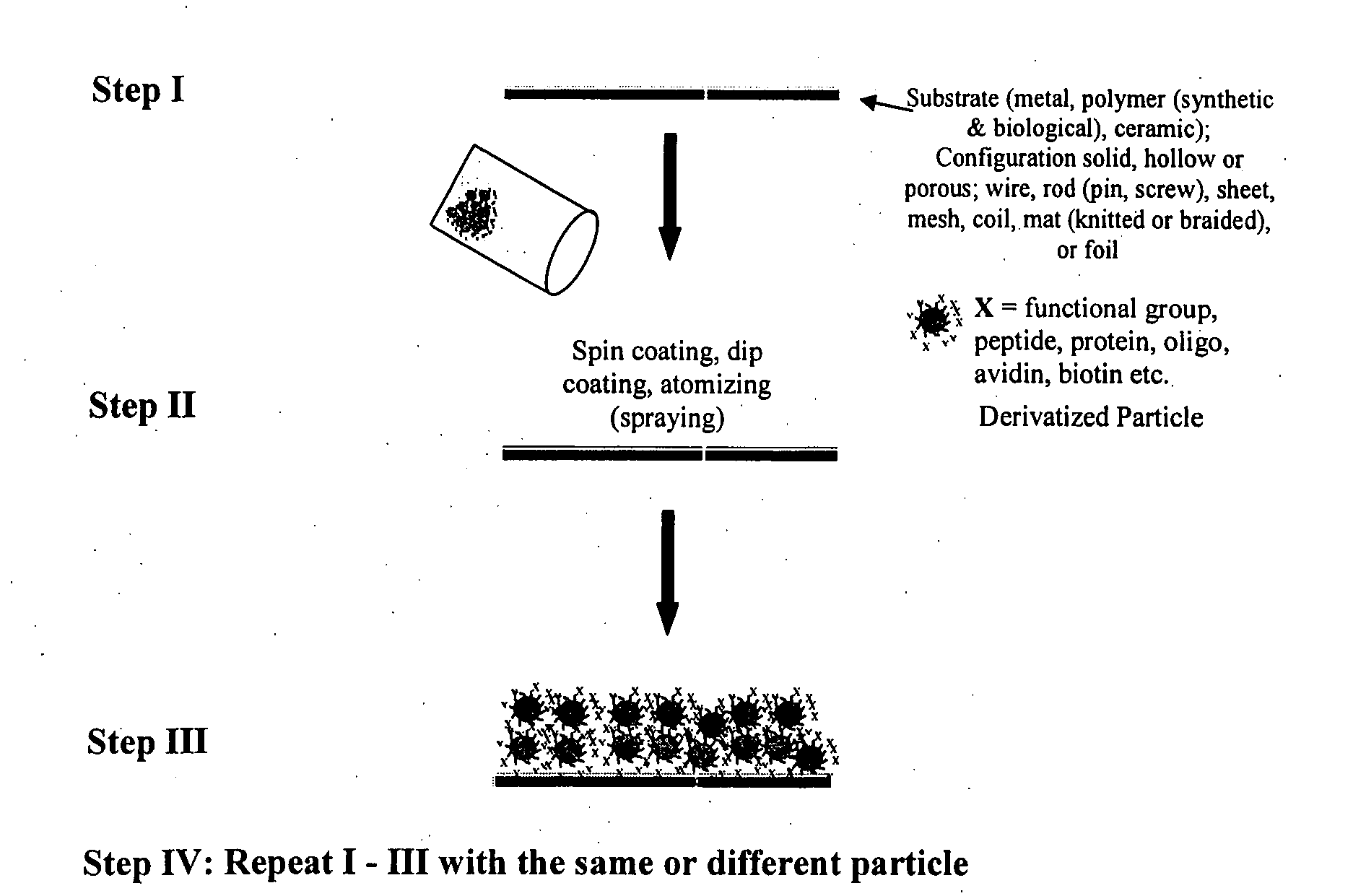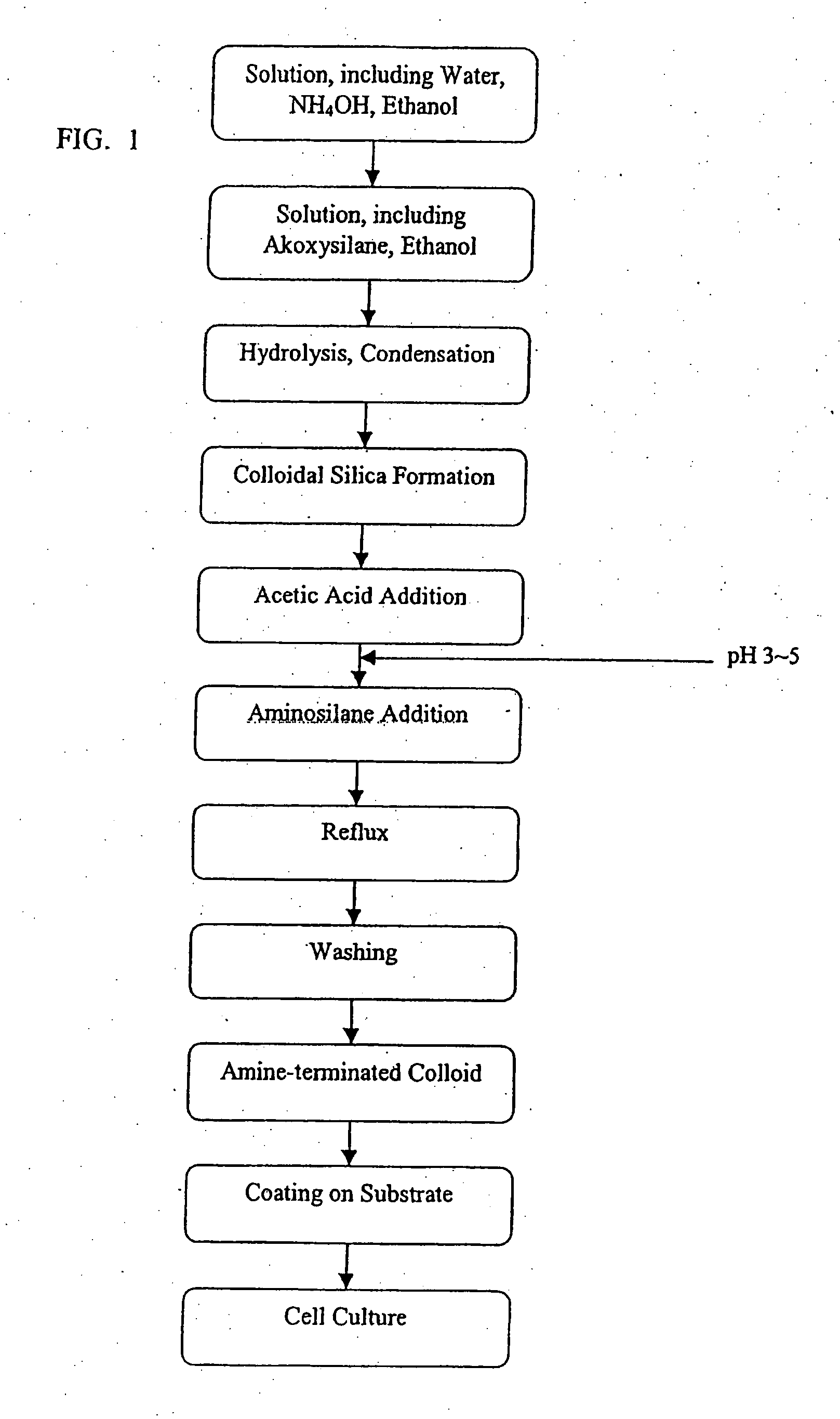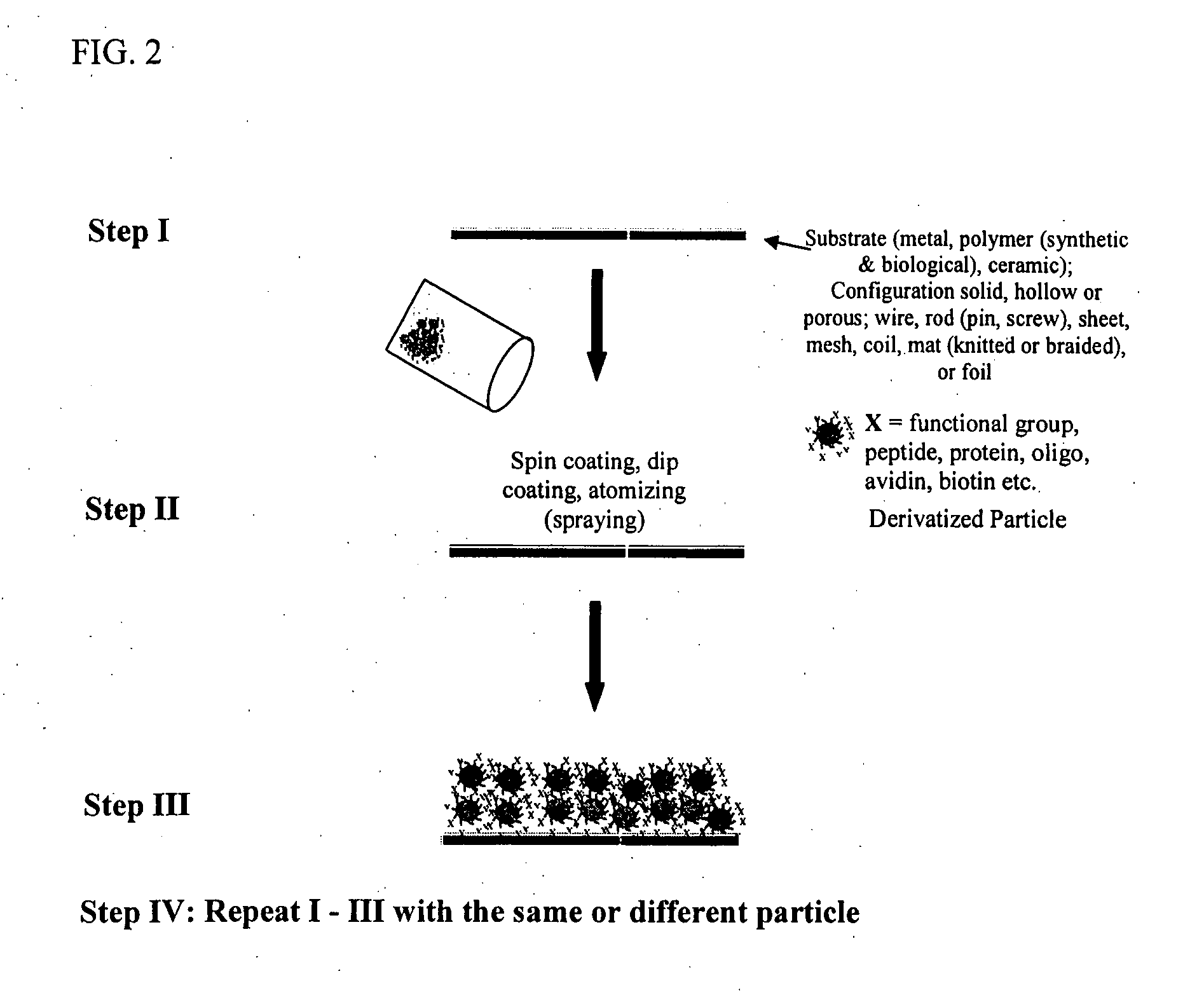Engineering of material surfaces
a technology of material surfaces and surfaces, applied in the field of providing surfaces, can solve the problems of poor integration of implants with surrounding bone, poor application prospects, and poor definition of conventional coating techniques, and achieve the effect of providing a suitable bio-mimetic interface for attaching cells
- Summary
- Abstract
- Description
- Claims
- Application Information
AI Technical Summary
Benefits of technology
Problems solved by technology
Method used
Image
Examples
example 1
[0123] 0.05 mm-thick foils of type 316-L stainless steel and titanium (99.99%) were obtained from Goodfellow Corporation (UK). For coating studies, the foils were cut into rectangle pieces (0.7 mm×10 mm), were cleaned ultrasonically in hexane and acetone for 5 minutes each and subsequently washed in ethanol, and then were rinsed in deionized water, followed by drying at 60° C. oven temperature for a 24-hour period.
[0124] A mono-dispersed, nano-particulate silica colloid was prepared by the so-called Stober process, see SOL-GEL SCIENCE: THE PHYSICS AND CHEMISTRY OF SOL-GEL PROCESSING (Academic Press 1990), using tetraethylorthosilicate (TEOS), Si(OC2H5)4, as the silica precursor and ammonia and alcohol as catalysts. The first step of this process entailed the hydrolysis of TEOS to the hydroxyl, intermediately followed by condensation of silicic acid, yielding silicon oxide (SiO2). Thereafter, the surface of the colloidal particles was modified to bear amine groups by reacting the co...
example 2
[0131] Cell-attachment and proliferation studies were carried out on the sample prepared in Example 1, using MC3T3-E1 osteoblast-like cells. Cells were cultured in alpha-MEM supplemented with 10% FBS and 1% pen-strep under standard culture conditions. Metal substrates were mounted in 4-chambered glass slides, using sterile vacuum grease (Dow Corning), and then were surrounded with low-melting agarose (1% solution), to prevent cell attachment to the glass surface. Cells were seeded at 10,000 cells / well (1 ml). After four days the medium was aspirated, and the cells were trypsinized and then manually counted with a hemacytometer. Samples for SEM analysis were prepared by first fixing with 1% glutaraldehyde followed by dehydration in an ethanol series (50%, 60%, 80%, 90%).
[0132] These studies showed that the aminopropyltriethoxy-silane modified silica surfaces had excellent cytocompatibility. The presence of a modified surface did not diminish cell attachment, relative to unmodified m...
example 3
[0133] As shown in FIG. 6, nominal concentration of amine groups that are amenable to functionalization reactions were identified using an assay described by Gaur et al. (Analytical Biochemistry, 1989, 180, 243). The assay involves first reacting the amine group with sulfo-SDTB followed by hydrolysis of the adduct with perchloric acid to liberate a colored cation that is assayed spectrophotometrically at 498 nm.
[0134] Surface amine concentration was calculated as follows:
Ti+SiO2—NH2 particle=0.65 NH2 groups / Å2
SS+SiO2—NH2 particle=0.46 NH2 groups / Å2
PUM
| Property | Measurement | Unit |
|---|---|---|
| diameter | aaaaa | aaaaa |
| diameter | aaaaa | aaaaa |
| polydispersity | aaaaa | aaaaa |
Abstract
Description
Claims
Application Information
 Login to View More
Login to View More - R&D
- Intellectual Property
- Life Sciences
- Materials
- Tech Scout
- Unparalleled Data Quality
- Higher Quality Content
- 60% Fewer Hallucinations
Browse by: Latest US Patents, China's latest patents, Technical Efficacy Thesaurus, Application Domain, Technology Topic, Popular Technical Reports.
© 2025 PatSnap. All rights reserved.Legal|Privacy policy|Modern Slavery Act Transparency Statement|Sitemap|About US| Contact US: help@patsnap.com



